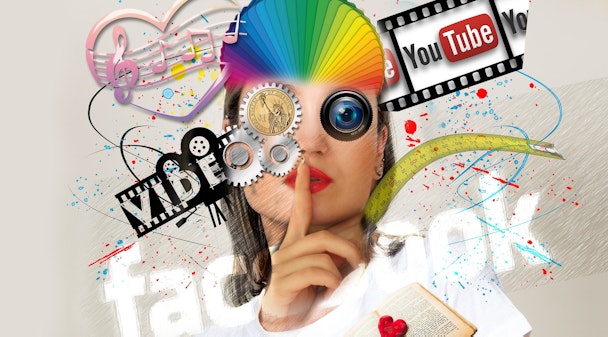Premium media will strike back in 2018 and five other predictions for ad land
It’s certainly been a highly eventful 12 months for Adland.

premium multimedia image
Brand safety and transparency have dominated the conversation, marketers’ imaginations have been fired up by new smart devices, while the importance of quality and ground-breaking creative was highlighted by some truly spectacular campaigns.
But what does 2018 hold for the ad industry?
Well, ready to usher in the new year, Jason Trout, EMEA MD of video ad tech company Unruly, has been gazing into his crystal ball to predict the trends and developments that will shape the ad industry over the next 12 months.
Premium Media Fights Back - Trust Is The secret weapon
Google and Facebook accounted for over 60% of US ad growth in 2017, according to eMarketer, despite their continued brand safety problems. In 2018 - with consumers twice as likely to trust news from premium sites than social feeds - we’ll see established newsbrands address this imbalance and take control of growth by offering brand safety and third-party verification, at scale.
Having successfully worked with Google to change its First-click Free policies, which penalised paid-journalism in search results, more media brands will team up to form premium marketplaces.
This will happen through initiatives like The Verified Marketplace, where The Guardian, The Telegraph and News UK have joined forces to offer trustworthy video inventory at scale, or through brand initiatives like Diageo’s Trusted Media Partners.
UNstereotyping Goes Mainstream
With the ASA set to enforce new punitive regulations for campaigns that feature stereotypical portrayals, 2018 will be the year that all major brands follow the example set by the likes of Unilever, AT&T, Mattel and J&J and work hard to remove gender and social stereotypes from their ad campaigns.
And with 50% of UK citizens thinking there is ‘no future for brands that show outdated stereotypes of women in their campaigns’ - this unstereotyping will come greater authenticity and brand loyalty.
But it’s not enough to simply unstereotype creatives. Brands that want to launch effective campaigns in 2018 will need to do the same for their distribution - going beyond simple demographic targeting and instead reaching individuals based on personality, emotion and much more.
Artificial Intelligence Gets Personal
Increased machine learning capabilities mean that 2018 will be the year that smart video marketers finally use AI to harness data and create more personal ad experiences.
This comes as the industry demands greater personalisation, in both dynamic content and bespoke targeting, in order to boost the bottom line. According to data from Boston Consulting Group, brands that create personalised moments using technology and customer data, on average, see revenue increases of 6-10%.
We saw the beginning of this in 2017, with brands like Toyota creating programmatic campaigns based on emoji usage and Disney encouraging park visitors to wear bracelets that record their movements in order to serve up targeted offers.
Tech partners will handle the heavy lifting around AI for brands in 2018, with solutions like Unruly’s Real Audiences, for example, which uses IBM Watson’s personality diagnostics alongside psychographic data and insights to enrich marketing personas and build out bespoke data segments so advertisers can target their consumers more effectively and drive higher conversion rates.
The Battle Against Brand Bypass Begins
As smart devices focused on auto-replenishment increasingly make purchasing decisions for us, advertisers need to act smart and fast to find new ways to keep their brand on the tip of consumers’ tongues and avoid being ‘bypassed’.
In a world powered by voice search, when a customer tells their device “add shampoo to my shopping list” without any mention of a brand, algorithms will determine which products are ordered regardless of customer loyalty or preference.
So in 2018 we expect to see brands doubling down on emotional brand-building campaigns across traditional channels and we’ll even see the resurgence of jingles and audio logos, given that companies that use musical branding are 96% more likely to be remembered.
Additionally, in 2018, we’ll see more and more advertisers using voice-specific marketing strategies that provide consumers with useful tips. For example, laundry detergent brand Tide has built an Alexa skill that talks you through removing stains.
Regulation Leads To Disruption
GDPR will light a fire under the ad industry in 2018, highlighting bad actors and practices, while clearing the way for innovative disruptors.
Lawyers will be the biggest winners here, as companies scramble to understand and implement new EU-wide legislation. We’ll also see significant disruption across all industries as GDPR presents a new innovative opportunity for those quick to respond.
This shake-up will also be good news for consumers, whose fears around privacy and poor ad experiences have brought about this change. A reappraisal of how data is handled, and which data is important, means brands will have to be more imaginative in their use.
Blockchain Begins To Block Ad Fraud
Blockchain looks set to revolutionise the fight against ad fraud in 2018.
The central tenet of blockchain technology - decentralised ledgers and data storage - has the potential to allow far greater transparency along the advertising supply chain, ensuring all parties have visibility on whether an ad has been seen, who it was seen by and what actions were taken.
With this opportunity up for grabs, the ad industry is already seeing an influx of blockchain-based exchanges and a number of industry bodies creating working groups. We also expect to see a number of high-profile mergers and acquisitions as the dust settles.
However, if blockchain exchanges are going to pave the way towards a fraudless ecosystem, speed will be a big factor. Currently, blockchain-enabled exchanges can only handle approximately 20 transactions per second, which is far slower than real-time bidding.
Jason Trout is the EMEA MD of Unruly
